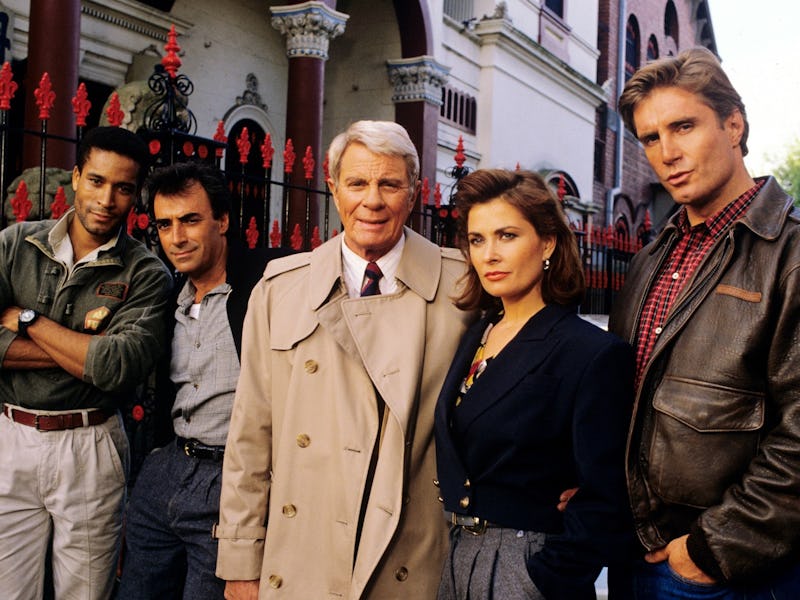The Last Mission: Impossible Finale Is Nearly Lost To Time
Do you remember the original Final Reckoning? Are you sure?

This year, the Mission: Impossible film series will, presumably, wrap things up with the ominously titled Mission: Impossible — The Final Reckoning. But this is not the first time the Mission franchise has called it a day. In fact, Final Reckoning will represent the third time Mission: Impossible has had one last impossible mission. While it may be the most Boomer thing of all time to point out, some elder Millennials out there might also remember when Mission: Impossible was a charming 1960s/1970s show that you could watch in reruns. Yes, the original Mission debuted in 1966, just one week after the classic Star Trek, and was even produced by the same guy who sold Star Trek: Herbert F. Solow.
But as beloved as the classic Mission was, what is almost completely forgotten is that it had its own version of “the next generation.” And that’s because after Mission: Impossible went off the air in 1973, it was later revived as a reboot/sequel series, running from 1988 to 1990. That’s right, just six years before the first Tom Cruise Mission: Impossible movie, the sequel series — which starred original IMF leader Peter Graves as Mr. Phelps — aired its final episode. And tracking down this version of this Mission: Impossible final reckoning, borders on the impossible.
Like the original 1966 show, episodes of the rebooted Mission: Impossible generally focused on Mr. Phelps (Graves) leading his team on various quirky assignments that were just within the bounds of a mid-range budget for an ‘80s TV series. Although the original series had arguably invented the formula of a mission-of-the-week series, by the 1980s, you had the likes of The A-Team and Knight Rider doing the Mission format, albeit silly and sexier. But these kinds of weekly action shows were drawing in huge audiences at the time.
So, the late ‘80s/early ‘90s Mission: Impossible reboot wasn’t exactly a risky spin on the classic spy show, but instead an attempt to make a recognizable IP into a show that could appeal to contemporary audiences. Fundamentally, this was the same goal as the first Tom Cruise film in 1996, but without the audacious stunts or utter reinvention of the core mythology. In other words, the second Mission: Impossible series wasn’t like this franchise’s Next Generation, it was more like Saved By the Bell: The New Class insofar as the entire cast was different, other than Graves in the lead.
Here, the original IMF gang was replaced by younger characters who all held, more or less, the same functions as the original gang: Nicholas Black (Thaao Penghlis) was a master of disguise, Grant Collier (Phil Morris) was the tech guy, and Max Harte (Tony Hamilton) was the muscle. Finally, and most interestingly, Casey Randall (Terry Markwell) was a sharpshooter and was later replaced by Shannon Reed (Jane Badler of V fame.) Of note, the demise of Casey in the 1989 episode “The Fortune” represents the only time one of the IMF members was captured, murdered, and later “disavowed” by the agency that employs them. Essentially, that little threat that had been mentioned at the start of every mission, going back to 1966, only got real in this one episode of the reboot show.
Terry Markwell’s departure could have been a great series finale. But Mission: Impossible went on.
However, not all of the reboot Mission episodes were as hardcore as “The Fortune,” a truly risky episode that could have ended the series. Instead, this Mission went on, eventually culminating in a series finale in which the gang has to take on a corrupt museum director in Egypt who is using fake mummies to murder people and is trying to bring back the morbid cult of the ancient god known as “Seth.” Yes, this dog-headed deity is also known as Set, or Sutekh, and is the same deathly enemy that Doctor Who dealt with in 1975 and very recently in 2024.
Mission: Impossible didn’t become outright fantasy by the end of its run on February 24, 1990. But episodes like “The Sands of Seth” do represent the Scooby-Doo-ish quality of what this show eventually became. While the 1966-1973 version is remembered for its minimalism and quirky low-budget espionage charm, the 1989-1990 version isn’t remembered at all. The two seasons of the show aren’t streaming in any kind of conventional way, and the only way to watch the episodes legally is via old DVDs. (Some folks may have uploaded old episodes to YouTube, complete with vintage commercial breaks. But, if you find those old episodes, the secretary will disavow any knowledge of those links.)
In short, as the IMF team defeated their enemy in the sands of Egypt, their adventures, essentially, became lost in the sands of time. The most curious reboot TV series of all time didn’t deserve to go out on such an unremarkable note. But the danger of all Mission: Impossible stories is always made clear at the beginning: This one could really be the last mission. Thirty-five years from now, it will be interesting to see which of the Tom Cruise Mission films has stood the test of time, and which feels like a strange, vague memory.